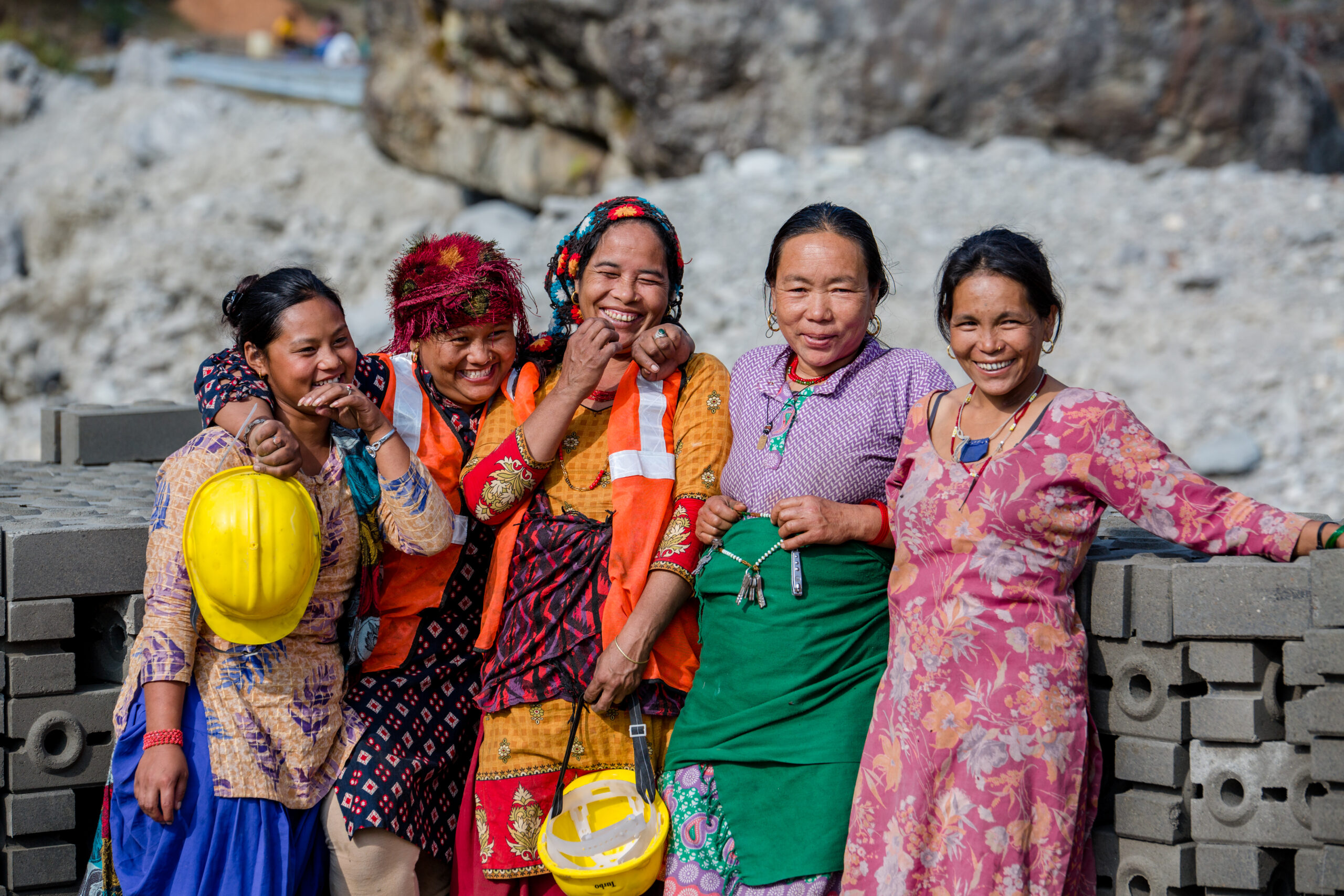‘IT’S A WIN-WIN’: BUILDING A WAY OUT OF POVERTY IN DISASTER-PRONE NEPAL
Affordable and climate-friendly earth bricks designed “like Lego” are the key building blocks for a social business in earthquake-hit Nepal that has created thousands of homes and jobs, and income for local entrepreneurs. Build Up Nepal has been expanding thanks to funding from the Business Partnership Facility (BPF), managed by the King Baudouin Foundation.
When the founders of Build Up Nepal were deciding on the best way to help in the aftermath of a devastating earthquake in 2015, they “took a big gamble instead of the safe path”. More than 800,000 homes had been destroyed by the disaster and subsequent floods, with poor rural families worst affected. But instead of using fundraised cash to re-build a few schools or houses, founders
Björn Söderberg and Bina Shrestha formed a sustainable business model that would spread its impact wider.
Build Up Nepal’s method helps facilitate the building of ecological, low-cost, earthquake-resistant homes while creating jobs and harnessing the investment and effort of local entrepreneurs and residents. At the core of the social business is a low-tech interlocking earth brick that is 20–40% cheaper to make and uses up to 60% less CO2 than conventional fired bricks. The micro-enterprise model has so far resulted in the building of more than 6,000 homes across 287 communities, and the creation of nearly 3,000 jobs.
And it has been growing thanks to funding from the BPF Enterprises for SDGs programme, which provides support for innovative enterprises that share at least one of the UN’s Sustainable Development Goals. In 2020, it awarded 130,000 euros to Build Up Nepal so they could scale up production, support
more than 100 new entrepreneurs, and expand geographically. The money is also being used to build a supportive market system, train more masons, and improve the brick machines.
‘Bricks, not bamboo’
“It wasn’t an easy beginning”, explains Build Up Nepal’s deputy managing director and co-founder Andreas Kölling. They began by training locals in a marginalised community to build bamboo homes, but when they returned a month later no one had done it. “We said, ‘why do you want to live in this tiny shelter when we’ve just shown you how to build a beautiful house?’ They didn’t want that; they wanted a brick house because bamboo is used for building a cow shed or small storage unit and is seen as very sub-standard,” says Kölling. “So, our first big learning was that if we want to build with something scalable, it has to be something that people don’t just accept living in, but they dream and really aspire to live in.” Knowing little about the technicalities, the founders “Googled day and night” to find out how the houses could be built well, and affordably, using local people and materials. That’s when they found the existing earth brick technology they use today.
Interlocking Bricks (CSEB) are made by mixing and compressing sand, soil – or stone-dust – and cement in a machine. They are cured and the cement sets and bonds with the sand to stabilise the brick, so no burning or fuel is needed. They are stacked, interlocking “just like Lego” and then a combination of cement and bars and horizontal bands bind them to create a strong structure. “It’s very easy and fast to build with,” adds Kölling.
Local economic engine
After the Nepalese government approved the technology, in 2017, they started working on the entrepreneur model on which the BPF project has been focused. The model aims to “ignite an economic engine” in each village. Build Up Nepal sells the brick-making machine to entrepreneurs who can invest money and time in a local building operation – this might be a husband-and-wife team, an individual, a youth association or women’s group.
Build Up Nepal then works with NGOs and other partners to offer support such as masonry training, funding quality assurance checks, and other back-up. Low-income families can save 25% of the usual cost of a small house and make more savings by sourcing materials or doing some of the unskilled labour. Fully-funded houses are occasionally provided for the most vulnerable families.
Build Up Nepal also offers incentives to ensure that women entrepreneurs have the opportunity to invest in the machine. Saraswati, from Jogidada, has built 35 houses via her micro-enterprise and says demand is growing quickly. “Many women ask me how they can become independent earners like me,” she says. Another, Parbati, says she recovered her investment in three to four months and has been convincing others of the cost savings and job opportunities it brings: “Our village has many youths who aspire to go abroad for employment. But seeing this, many are motivated to stay.”
Invested in the future
Kölling adds: “We are driven by the social, environmental and economic impact, but in the conversation with potential entrepreneurs the focus is on how this is a good business. “To make long-term scalable reconstruction and recovery work, you need to get the private sector on board. The majority of the investment has to be from the local person. “That also gives it more impact for BPF. Entrepreneurs from that area can operate very cheaply; they already have a strong social network, they know where to get the materials at the cheapest cost, and where to get local masons, and they know how to convince the local government to build using this material… It’s a win-win.”

“Our village has many youths who aspire to go abroad for employment. But seeing this, many are motivated to stay.”
Parbati

